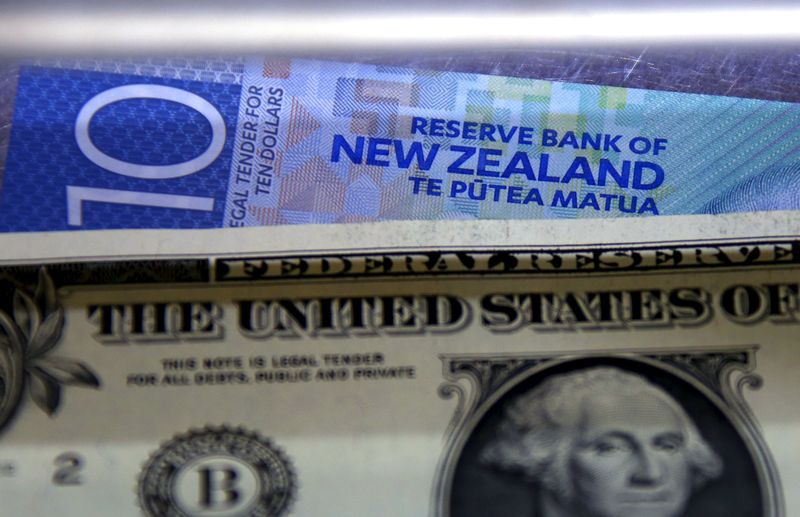Investing.com -- Most Asian currencies moved little on Wednesday, while the dollar steadied from recent gains as markets awaited fresh cues on monetary policy from the minutes of the Federal Reserve’s May meeting.
The New Zealand dollar was a key outlier for the day, plummeting 1.3% to a three-week low after the Reserve Bank of New Zealand hiked interest rates as expected, but signaled a potential pause in its nearly two-year-long rate hike cycle.
This, coupled with signs of worsening economic conditions in the country, posited a weak outlook for the kiwi, as the local economy struggles with high inflation and slowing growth in its biggest trade partners.
Broader Asian currencies moved little, but were nursing steep losses this week as sentiment also remained constrained by fears of a U.S. debt default. Democrat and Republican lawmakers offer scant cues on when a deal to raise the debt ceiling will be reached, as talks continued ahead of an early-June deadline for a default.
This saw markets seek safe haven in the dollar, with the dollar index and dollar index futures steadying on Wednesday after overnight gains.
Focus is also squarely on the minutes of the Fed’s May meeting, due later in the day, for any cues on when the central bank plans to pause its rate hike cycle. But with U.S. rates likely to stay higher for longer, Asian currencies are set for more pressure.
This was largely seen with losses in the Chinese yuan, which hovered near six-month lows after tumbling below the key 7 level to the dollar last week.
Fears of worsening ties between Beijing and Washington also weighed, after China unexpectedly blocked local sales of U.S. chipmaker Micron Technology (NASDAQ:MU) over security concerns.
Beijing also criticized a recent trade deal between the U.S. and Taiwan, which saw the Taiwan dollar trading 0.5% down for the week.
Concerns over China also pulled the Australian dollar down 0.2%, given the country’s heavy reliance on the mainland as an export destination.
The Japanese yen rose 0.1% on Wednesday, but was trading at six-month lows to the dollar, as the prospect of continued ultra-loose monetary conditions in the country dented the yen’s appeal.
The Indian rupee rose 0.2%, but was trading close to a two-month low as sentiment was rattled by the Reserve Bank withdrawing the 2000 rupee note, which markets feared could cause economic disruption in the country.
